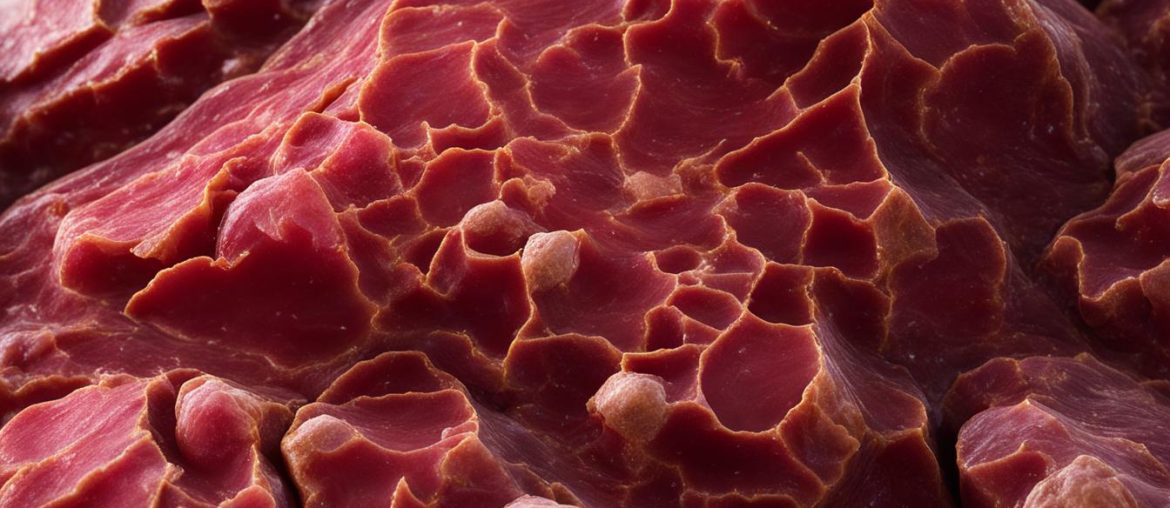Knowing when it’s the right time to euthanize a dog with end-stage liver cancer can be a difficult decision for pet owners. Chronic progressive liver failure in dogs can unfold in several stages, starting with mild signs of lethargy and loss of appetite, progressing to jaundice and abdominal distension, and ultimately leading to neurological issues like loss of vision and seizures. The progression of the disease varies for each dog, depending on the cause and their response to treatment options. When the disease has progressed to the third stage and the symptoms are no longer manageable, euthanasia may be recommended by the veterinarian. Early signs of liver failure include prolonged vomiting and diarrhea, while later signs include yellowing of the eyes, severe fatigue, lack of appetite, weight loss, increased drinking and urination, seizures, confusion, and disorientation. Consulting with the veterinarian and assessing the dog’s quality of life are important steps in determining the right time for euthanasia.
Key Takeaways
- Euthanizing a dog with liver cancer is a challenging decision for pet owners
- Liver cancer in dogs progresses through different stages, causing various symptoms
- Consulting with a veterinarian is vital in determining the right time for euthanasia
- Assessing the dog’s quality of life is crucial in making an informed decision
- Early signs of liver failure should not be ignored and prompt veterinary attention should be sought
Understanding Chronic Liver Disease in Dogs

Canine liver failure, including liver cancer, can be devastating for dogs and their owners. The liver plays a critical role in the body, converting food into nutrients, maintaining blood clotting, managing immunity, synthesizing proteins, carrying out waste, and breaking down toxins. In the early stage of liver disease, dogs may show signs of lethargy, loss of appetite, and vomiting. As the disease progresses, toxins build up in the blood, causing jaundice and abdominal distension. At its final stage, liver failure affects the brain, leading to neurological issues. The prognosis for each dog with liver cancer may vary depending on the cause, disease progression, and response to treatment options.
Understanding the symptoms and stages of chronic liver disease is crucial in making informed decisions about euthanasia. Early detection and intervention can improve a dog’s quality of life and potentially extend their survival time. However, when the disease has progressed to the point where the symptoms are no longer manageable and the dog’s quality of life is significantly diminished, euthanasia may be recommended by the veterinarian.
Symptoms of Liver Cancer in Dogs
Recognizing the symptoms of liver cancer in dogs is essential for early diagnosis and timely treatment. Common signs include:
- Loss of appetite and weight loss
- Lethargy and weakness
- Vomiting and diarrhea
- Increased thirst and urination
- Jaundice (yellowing of the eyes, gums, and skin)
- Abdominal distension
- Seizures and neurological issues
If you notice any of these symptoms in your dog, it’s important to consult with a veterinarian for proper diagnosis and treatment options.
| Stage | Description |
|---|---|
| Stage 1 | Mild signs of liver disease, such as loss of appetite and lethargy |
| Stage 2 | Progression of liver disease with jaundice and abdominal distension |
| Stage 3 | Advanced liver disease with neurological symptoms and poor quality of life |
As the disease progresses through these stages, the prognosis may become more severe and the options for treatment may become limited. It’s essential to work closely with your veterinarian to assess your dog’s condition and determine the best course of action, which may include considering euthanasia.
Veterinary Perspectives on Ethical Euthanasia
When it comes to euthanizing dogs with liver cancer, veterinarians play a crucial role in offering guidance and making ethically informed decisions. The question of when to consider euthanasia for a dog with liver cancer involves weighing various factors, including the available treatment options, the dog’s condition, prognosis, and potential pain and suffering. Different veterinarians may have varying perspectives on what they consider ethically acceptable, taking into account economic and emotional factors.
In the realm of veterinary medicine, ethical boundary work is often employed by veterinarians to define what they consider normatively legitimate in different areas of practice. While opinions may differ, the ultimate goal for veterinarians is to prioritize the animal’s well-being and quality of life.
“As veterinarians, we must consider the best interests of the dog when making decisions about euthanasia. We take into account the available treatment options, the dog’s condition, prognosis, and the potential for pain and suffering. Every case is unique, and we approach each situation with compassion and a focus on the dog’s comfort and well-being.”
By consulting with veterinarians who have experience and expertise in dealing with liver cancer in dogs, pet owners can gain valuable insights and guidance to help them make the most informed decision regarding euthanasia. It is important to have open and honest conversations with the veterinarian, discussing the dog’s overall condition, treatment options, and the potential impact on their quality of life.
| Veterinary Perspectives on Euthanasia | Considerations |
|---|---|
| Ethical Acceptability | Varying perspectives based on economic and emotional factors |
| Ethical Boundary Work | Defining normatively legitimate practices |
| Consulting with Veterinarians | Gaining valuable insights and guidance |
Signs It’s Time to Euthanize a Dog with Liver Cancer
Recognizing the signs that indicate it may be time to euthanize a dog with liver cancer is crucial for pet owners. In addition to the early signs of liver failure, such as prolonged vomiting and diarrhea, there are other indicators that the dog’s condition may be worsening. These signs include yellowing of the eyes, skin, and gums, severe fatigue or loss of movement, pronounced diarrhea and/or vomiting, lack of appetite, weight loss, increased drinking and urination, seizures, and confusion. Consulting with a veterinarian is important to assess the dog’s overall condition and determine if euthanasia is the most compassionate choice.
When a dog with liver cancer reaches a point where their quality of life is significantly affected and their symptoms are no longer manageable, euthanasia may be recommended. This decision is made with the well-being and comfort of the dog in mind. It is important to consider the dog’s overall health, level of pain and suffering, and ability to engage in normal daily activities. If the dog is experiencing severe discomfort, exhibiting signs of distress, and their symptoms are rapidly progressing, it may be time to consider euthanasia as a compassionate option.
Euthanasia is a difficult decision, but it can provide a peaceful end for a dog with liver cancer. It is important to remember that every dog’s situation is unique, and there is no one-size-fits-all answer. Consulting with a veterinarian who specializes in end-of-life care can provide invaluable guidance and support during this challenging time. They can help pet owners navigate the emotional and ethical considerations, ensuring that the decision is made with the utmost compassion and in the best interest of the dog.
| Signs It’s Time to Euthanize a Dog with Liver Cancer |
|---|
| Yellowing of the eyes, skin, and gums |
| Severe fatigue or loss of movement |
| Pronounced diarrhea and/or vomiting |
| Lack of appetite |
| Weight loss |
| Increased drinking and urination |
| Seizures |
| Confusion |
Assessing a Dog’s Quality of Life

When it comes to making difficult decisions about euthanasia for a dog with liver cancer, assessing their quality of life is crucial. It can be easy for pet owners to overlook changes in their dog’s well-being when they are dealing with a chronic disease. To assist in this evaluation, a quality of life assessment can provide an objective measure of the dog’s comfort and happiness. This assessment includes questions about the dog’s eating and drinking habits, signs of pain or discomfort, and their ability to participate in daily activities.
By regularly monitoring and documenting these factors, pet owners can gain a better understanding of their dog’s overall well-being. This information can help guide the decision-making process and provide clarity on whether euthanasia may be the most compassionate choice. It is important to remember that managing pain in a dog with liver cancer is crucial for maintaining their quality of life. With the guidance of a veterinarian, pain management strategies can be implemented to help make the dog as comfortable as possible.
Making the Decision: Euthanasia at Home

When the time comes to euthanize a dog with end-stage liver cancer, pet owners have the option to choose euthanasia at home. This choice allows the dog to be in a familiar and comfortable environment, surrounded by loved ones. Euthanizing a dog at home can help reduce stress and anxiety, both for the dog and the family. It also eliminates the need for a car trip to the vet, which can be challenging for dogs in poor health. Euthanasia at home provides the opportunity for a peaceful and personal farewell, allowing the dog to pass away in the arms of their loved ones.
There are several benefits to choosing home euthanasia for dogs. Dogs can be in a familiar and comfortable setting, surrounded by their loved ones, which helps reduce stress and anxiety. There is no need for a car trip to the vet, especially for dogs in poor health or with mobility issues. Home euthanasia allows for a longer and more relaxed farewell, without the rushed atmosphere of a vet clinic. Additionally, there are no other unfamiliar pets present, which can cause added stress for the dog. Overall, home euthanasia provides a peaceful and personalized experience for saying goodbye to a beloved dog.
The process of euthanasia for dogs at home involves the administration of a medication that brings the dog from consciousness to unconsciousness and stops the heart and breathing. In some cases, a sedative is given beforehand to help the dog relax and fall into a deep sleep. This sedative can make the euthanasia process smoother and less stressful for both the dog and the pet owners. The euthanasia drug is usually administered intravenously in the front or rear legs, ensuring a quick and painless passing. It is important to note that euthanasia cannot be reversed once the medication is given.
Euthanasia at home offers a compassionate way to say goodbye to a dog with end-stage liver cancer. It provides a peaceful and comfortable environment for the dog’s final moments, surrounded by their loved ones. By choosing home euthanasia, pet owners can ensure a more personalized and less stressful experience for both themselves and their beloved dog.
The Process of Dog Euthanasia

When it comes to end-stage liver cancer in dogs, the process of euthanasia is a delicate and compassionate procedure performed by licensed veterinarians. Euthanasia allows for a painless and peaceful passing for dogs who are suffering and have a deteriorating quality of life.
The euthanasia medication used is an overdose of anesthetic, which brings the dog from consciousness to unconsciousness and finally stops the heart and breathing. In some cases, a sedative is given beforehand to help the dog relax and fall into a deep sleep, making the euthanasia process smoother and less stressful for both the dog and the pet owners.
The euthanasia drug is usually administered intravenously in the front or rear legs, ensuring a quick and painless passing. It is important to note that once the medication is given, euthanasia cannot be reversed. This final act of compassion ensures that dogs with end-stage liver cancer can find peace and relief from their suffering.
Sources:
- “End-Stage Liver Cancer in Dogs.” Veterinary Center for Clinical Trials. Accessed August 20, 2022. https://www.vcct.ucdavis.edu/cancer/canine/liver/overview
- “When to Put Your Dog to Sleep.” The Humane Society of the United States. Accessed August 20, 2022. https://www.humanesociety.org/resources/when-put-your-dog-sleep
Benefits of Home Euthanasia for Dogs

When it comes to saying goodbye to a beloved dog with end-stage liver cancer, home euthanasia offers numerous benefits for both the dog and the pet owners. Opting for home euthanasia allows the dog to be in a familiar and comfortable setting, surrounded by their loved ones. This familiar environment helps reduce stress and anxiety, creating a more peaceful experience for the dog during their final moments.
Unlike a visit to the veterinary clinic, home euthanasia eliminates the need for a car trip, which can be particularly challenging for dogs in poor health or with mobility issues. The absence of additional unfamiliar pets in the clinic also reduces stress for the dog, ensuring a more peaceful atmosphere during the farewell.
The process of home euthanasia allows for a longer and more relaxed goodbye, without the rushed atmosphere often experienced in a clinical setting. The dog can pass away peacefully, in the arms of their loved ones, surrounded by the familiar sights and smells of home. This personalized and compassionate approach to euthanasia is a comforting option for pet owners, providing closure in a calm and private environment.
In summary, home euthanasia for dogs with end-stage liver cancer offers several advantages. It allows the dog to be in a comfortable and familiar environment, surrounded by loved ones. The absence of a car trip and the presence of unfamiliar pets reduces stress and anxiety. Home euthanasia also provides a longer and more relaxed farewell, allowing the dog to pass away peacefully in the arms of their loved ones. This compassionate approach to euthanasia ensures a peaceful and personalized experience for saying goodbye to a beloved dog.
The Importance of Compassionate Euthanasia

Deciding when to euthanize a dog with end-stage liver cancer is a difficult and emotional decision for pet owners. It is essential to prioritize the well-being and comfort of the dog during this challenging time. Compassionate euthanasia allows the dog to pass peacefully and without further pain or suffering.
Dogs with liver cancer may experience severe discomfort and a deteriorating quality of life as the disease progresses. It is important to understand that delaying euthanasia in the hopes of a natural death can result in unnecessary pain and distress for the dog. Recognizing the signs that indicate it may be time to euthanize, such as pronounced diarrhea and vomiting, severe fatigue, lack of appetite, or seizures, is crucial.
Managing pain in a dog with liver cancer is also essential for maintaining their quality of life. Consult with your veterinarian to ensure that appropriate pain management strategies are in place to help alleviate any discomfort the dog may be experiencing. Regular assessment of the dog’s quality of life, using tools such as a quality of life assessment, can provide objective measures of their comfort and happiness. This assessment includes questions about the dog’s eating and drinking habits, signs of pain, and participation in daily activities.
Ultimately, the decision to euthanize a dog with liver cancer should be guided by compassion and consideration for the dog’s well-being. By choosing compassionate euthanasia, you can provide your beloved pet with a peaceful and dignified passage, free from further pain and suffering.
Wrapping Up
Deciding when to euthanize a dog with liver cancer is a difficult and emotional decision for pet owners. Understanding the signs of liver failure, consulting with a veterinarian, assessing the dog’s quality of life, and considering the benefits of home euthanasia can help pet owners navigate this challenging process. Ultimately, the well-being and comfort of the dog should be the primary focus when making the decision. By opting for compassionate euthanasia, pet owners can ensure that their beloved dog passes peacefully and without further pain or suffering.
Chronic liver disease in dogs can progress through several stages, each with its own set of symptoms and challenges. As the disease progresses, liver cancer can cause severe discomfort and decrease the dog’s quality of life. Recognizing the signs of liver failure and consulting with a veterinarian are crucial steps in determining the right time for euthanasia. Additionally, assessing the dog’s quality of life and considering the benefits of home euthanasia can provide a more peaceful and personalized farewell for the dog and their family.
When it comes to liver cancer progression in dogs, it is important to prioritize the dog’s well-being and comfort. Delaying euthanasia in the hopes of a natural death can prolong the dog’s suffering unnecessarily. Compassionate euthanasia allows pet owners to relieve their beloved dog’s pain and suffering, ensuring a peaceful passing. It is a difficult decision, but one that prioritizes the dog’s well-being above all else.
FAQ
When is it the right time to euthanize a dog with end-stage liver cancer?
The right time to euthanize a dog with end-stage liver cancer is when the symptoms are no longer manageable, and the dog’s quality of life has significantly deteriorated.
What are the early signs of liver failure in dogs?
The early signs of liver failure in dogs can include prolonged vomiting, diarrhea, lethargy, and loss of appetite.
What are the later signs of liver failure in dogs?
The later signs of liver failure in dogs can include yellowing of the eyes, severe fatigue, lack of appetite, weight loss, increased drinking and urination, seizures, confusion, and disorientation.
How do veterinarians make decisions about euthanasia for dogs with liver cancer?
Veterinarians consider factors such as available treatment options, the dog’s condition and prognosis, and the potential for pain and suffering when making decisions about euthanasia for dogs with liver cancer.
How can I assess my dog’s quality of life when considering euthanasia?
A quality of life assessment can help you objectively measure your dog’s comfort and happiness. This assessment includes questions about eating and drinking habits, signs of pain, and participation in daily activities.
Is euthanasia at home an option for dogs with liver cancer?
Yes, euthanasia at home provides a familiar and comfortable environment for the dog, surrounded by loved ones, reducing stress and anxiety.
How is euthanasia performed for dogs with liver cancer?
Euthanasia for dogs with liver cancer involves administering an overdose of anesthetic, which brings the dog from consciousness to unconsciousness and stops the heart and breathing. A sedative may be given beforehand to help the dog relax.
What are the benefits of home euthanasia for dogs with liver cancer?
Home euthanasia allows for a longer and more relaxed farewell, eliminates the need for a car trip to the vet, and provides a peaceful and personalized experience for saying goodbye.
Why is compassionate euthanasia important for dogs with liver cancer?
Compassionate euthanasia is essential to relieve a dog’s pain and suffering caused by liver cancer and prioritize their well-being and comfort.






